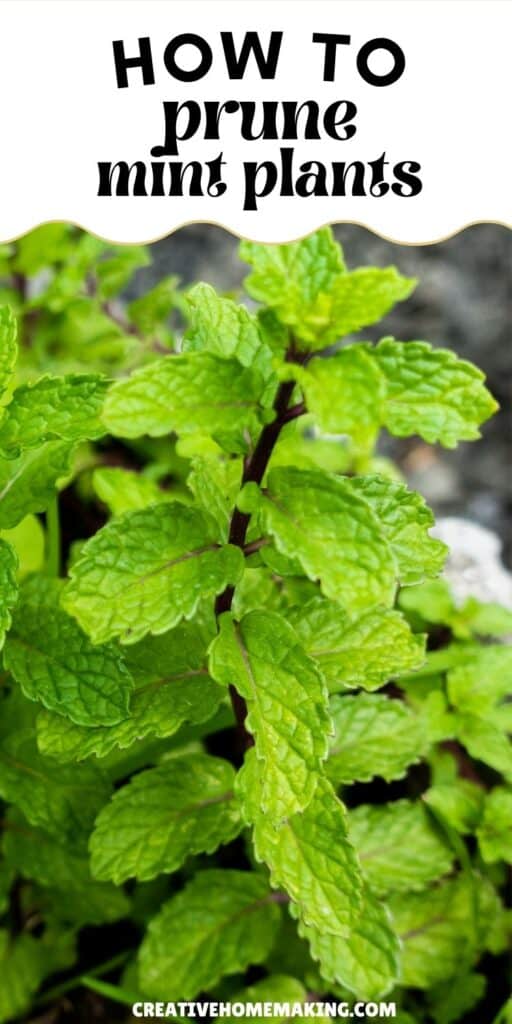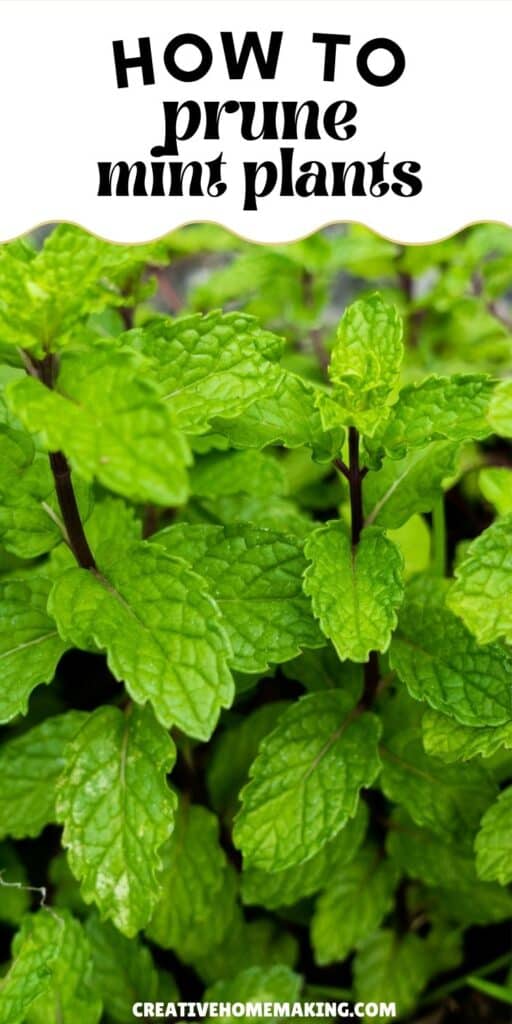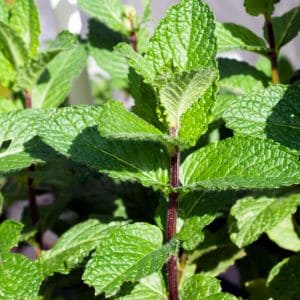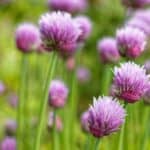Pruning your mint plants is an easy way to keep them healthy and full of fresh leaves. To prune mint, cut back about one-third to half of the stems during the growing season and trim the plant to around an inch above the ground at the end of the season. This helps your mint grow bushier and stops it from taking over your garden.
This post may contain affiliate links.
You can use sharp scissors or pruning shears to make clean cuts, which helps the plant recover faster. Pruning also stops flowers from forming, so your mint stays leafy and ready for cooking, freezing, or drying. With regular trimming, you’ll have plenty of fresh mint for your kitchen all season long.
Related Article: Grow Mint with These Perfect Companion Plants for a Thriving Herb Garden

Essential Steps for Pruning Mint Plants
Pruning mint plants helps keep them healthy and full of fresh leaves. You’ll want to know the best time to prune, how to make clean cuts, and the right tools to use. Doing each step well ensures your mint stays productive and looks good.
When to Prune Mint
The best time to prune mint is usually after the plant flowers, when it reaches about 8 to 12 inches tall. Pruning then helps keep the leaves fragrant and stops the plant from using energy on seeds.
You can also do light pruning in early spring or late fall to encourage new growth and control the size. Avoid pruning too early in the first year because the plant needs time to grow strong.
If you prune regularly, every few weeks during the growing season, you can keep your mint bushy and prevent it from overtaking nearby plants.
Related Article: How to Dry Mint Easily for Fresh Flavor All Year Round
How to Cut Mint Properly
Start by cutting back about one-third of each stem, especially ones that are long or overshadow other parts of the plant.
Use sharp scissors or pruning shears to make clean cuts just above a leaf joint. This spot will grow new shoots faster.
You can also pinch off small leaves by hand to quicken growth without using tools. Always prune evenly to keep a compact shape.
Avoid cutting too low to prevent stressing the plant. Cutting near the soil is fine if the mint is overgrown or unhealthy.

Tools Needed for Pruning
You only need a few simple tools for mint pruning. Use clean, sharp scissors or pruning shears to make smooth cuts that don’t damage the plant.
Keep your tools clean by wiping the blades with rubbing alcohol before and after pruning to stop disease spread.
If your mint is in a pot or a smaller space, handheld scissors usually work well. For larger garden plants, pruning shears make cutting thicker stems easier.
Avoid using dull blades because they can crush stems and slow down healing. Good tools lead to better growth for your mint.
Caring for Mint After Pruning
After you prune mint, it’s important to support the plant as it grows back strong and healthy. This means giving it the right water, watching for common care mistakes, and controlling how much it spreads.
Encouraging Healthy Regrowth
Right after pruning, water your mint thoroughly but don’t soak the soil. Mint likes soil that is evenly moist, so check it regularly to keep the moisture balanced.
Make sure your mint gets enough sunlight—about 4-6 hours a day. This helps the plant make new leaves fast.
You can also pinch or trim any shoots that look weak. This lets the plant focus energy on the stronger stems and create a bushier shape.
If your mint is in poor soil, consider adding compost or a balanced fertilizer to give it extra nutrients after pruning.
Dealing With Common Mistakes
Many people cut too far down or damage new growth while pruning. Avoid cutting the fresh, healthy shoots as this can slow regrowth or cause stress.
Overwatering is another common mistake. Too much water can lead to root rot. Only water when the top inch of soil feels dry.
Also, make sure you don’t let the mint flower before pruning. Flowering takes energy away from the leaves, reducing flavor and growth. Prune soon after flowers appear.
Preventing Overgrowth
Mint grows fast and can take over your garden if left unchecked. Pruning back regularly helps keep it under control.
Try cutting back about one-third of the plant after it flowers to slow spreading. You can also remove runners (long stems that root away from the main plant).
If your mint is in the ground and spreading too much, consider using barriers or growing in containers to limit where it grows next.
Regular pruning combined with these controls helps keep your mint healthy and easy to manage.
Follow my mint board on Pinterest.




